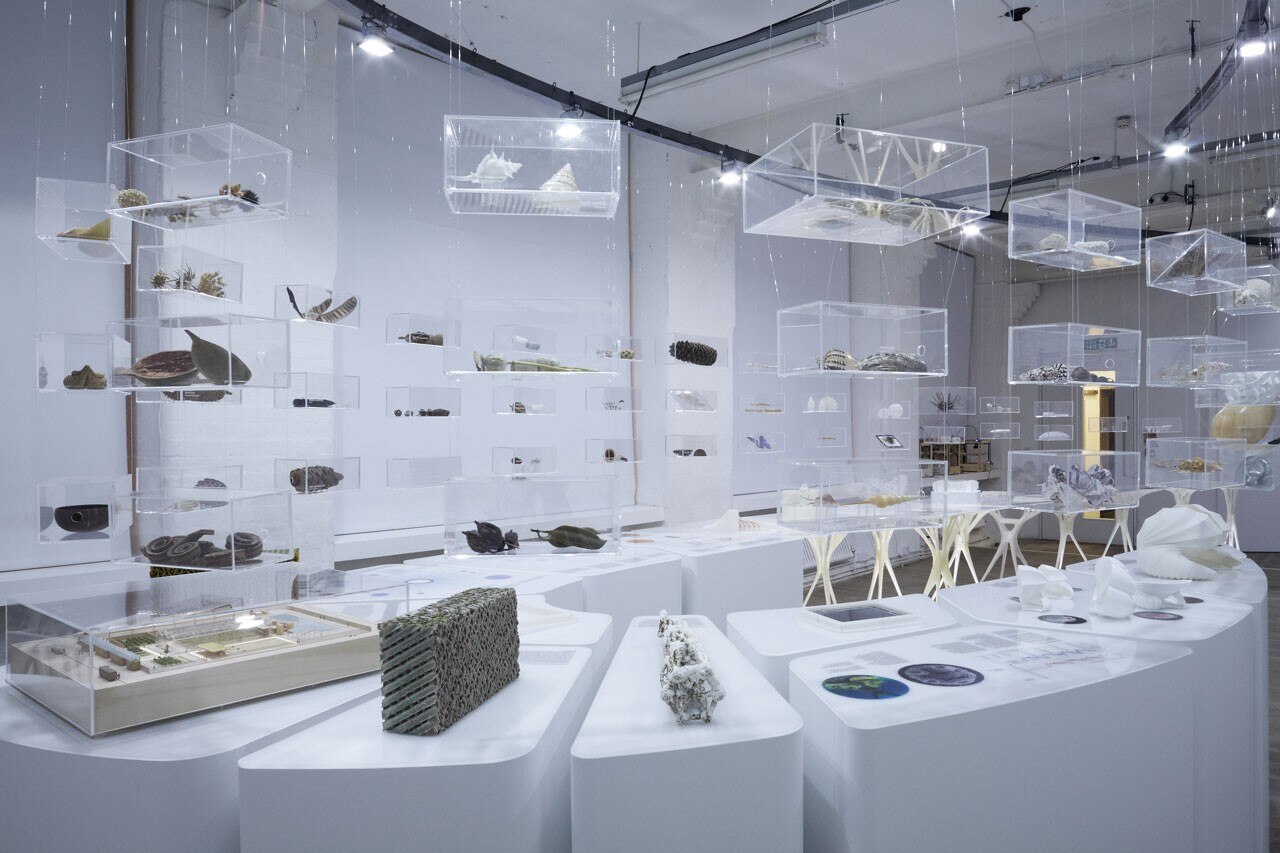
Elsewhere, an atrium modelled on the mirror structures in the eyes of the spook fish enabled the studio to stream natural light into the lower floors of its proposal for a biomimetic office.
The cocolithiphore, meanwhile, makes use of excess carbon dioxide in the air to grow skeletons of calcium carbonate in the ocean. This process has informed Exploration's plans to grow a pavilion in seawater by using electro-deposition to make a building from accretive minerals.



The exhibition unfurls on a series of interlocking tables configured in the shape of a tendril so that the narrative of one project feeds organically into the next. The Namibian Fog Basking Beetle is one of numerous biological wonders, including rocks, skulls, shells, seed pods and feathers, housed in perspex boxes hanging above.
This is not to say the display is chaotic; it is rather a finely tuned and carefully orchestrated communication exercise told in a combination of precise language, seductive nature photography, infographics and 3D printed models, as well as videos which intersperse wildlife footage with animated hand-drawn sketches and commentaries by engineers and biologists alike.


Overall Pawlyn and his team offer an optimistic vision of the natural world and humans' relationship with it, one which is based on interdependence: “Mature ecosystems are complex, densely interconnected and cyclical systems that run on solar energy, produce no waste and have become optimised as whole systems.”
By adhering closely to this definition, always tempering beauty with function and combining nature with technology, Exploration Architecture presents a practice which unites research and application and brings blue sky solutions to reality. “Designing with Nature” convincingly communicates evolution in a nutshell.

Until 15 March 2014
Exploration Architecture: Designing with Nature
The Architecture Foundation
Ground Floor East
136–148 Tooley St, London


